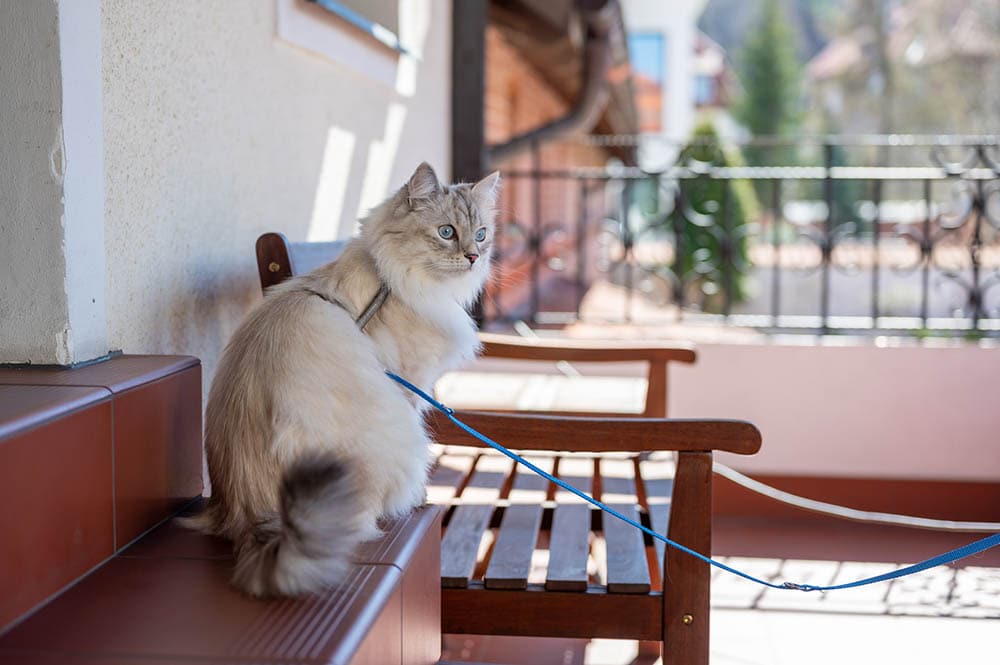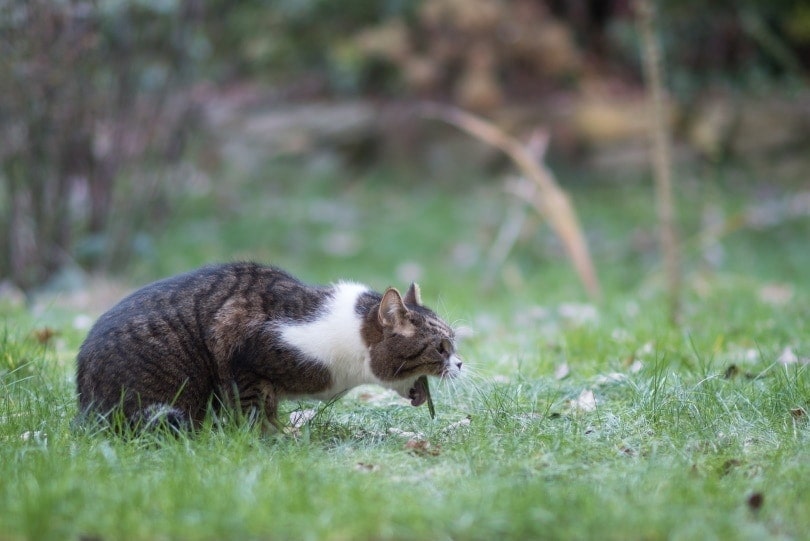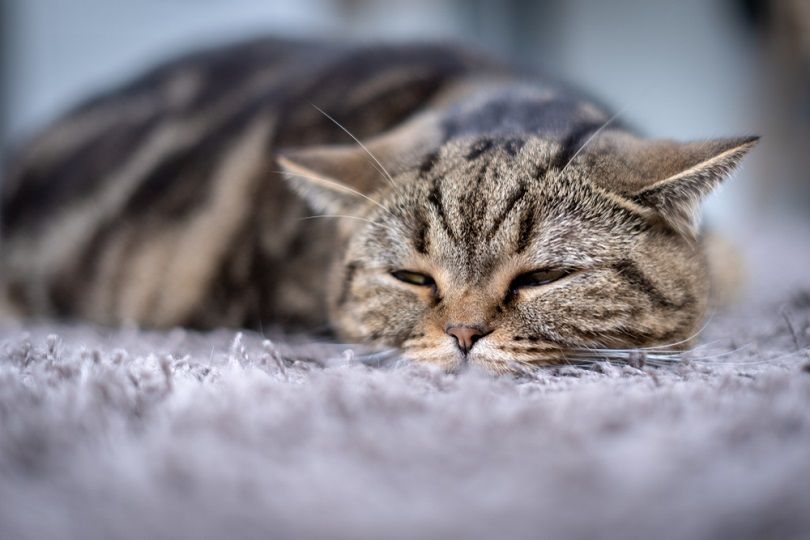How to Cat-Proof Your House: 11 Safe Ways
Updated on
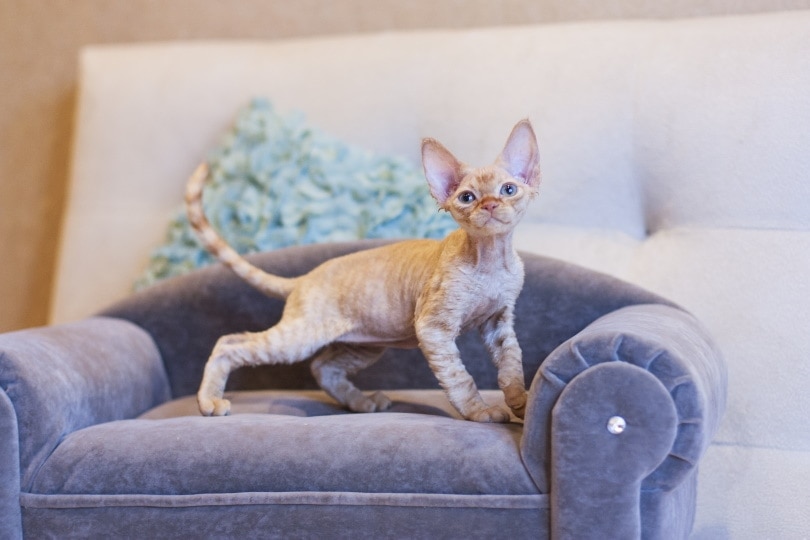
Is there anything more exciting than welcoming a new kitten into your home? If you’re adopting a kitten soon, you’re probably busy checking off the internal checklist in your mind of all the things you need to buy before bringing him home. While visions of litter boxes, food dishes, water bowls, and beds occupy your head, you should make some space in your mind to consider how safe your home is for your new kitten.
Cats are curious little critters by nature and can get into trouble in a space that hasn’t been optimized for their mischievous minds. We’re bringing you this guide today to learn how to kitten-proof your home to prevent accidents and deter bad behavior before it starts.
Keep reading to find our tips on cat-proofing your house before letting your new kitten claim its territory.
Top 11 Ways to Cat-Proof Your House
1. Check Your Plants
Houseplants are a lovely decorative accent in any home, but certain plants can pose very serious dangers for pets. If you have a lot of greenery in your home, you’ll need to do some research to determine if the plants you have are safe to grow when you have a curious kitty sniffing around.
- Lilies
- Sago palms
- Azaleas
- Rhododendrons
- Dieffenbachia
- Daffodils
- English ivy
- Kalanchoe
- Pothos
You don’t need to get rid of all your houseplants or resign yourself to a home void of any plant life, though. There are plenty of beautiful cat-friendly varieties you can safely grow.
- Spider plants
- African violet
- Calathea
- Ponytail palm
- Banana plant
- Friendship plants
- Money tree
- Polka dot plant
You can learn more about other potentially toxic plants as well as other non-toxic varieties on the ASPCA’s website.
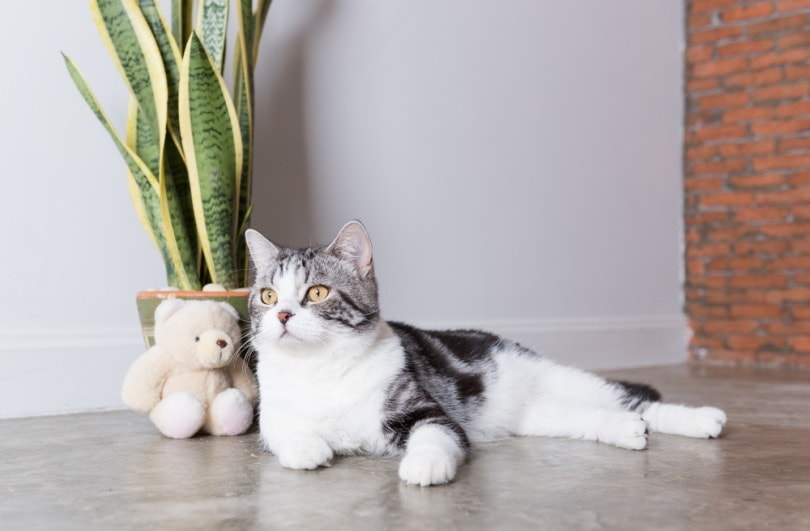
2. Do a Deep Clean
Kittens are like human babies in a lot of ways. They learn more about the world around them by exploring it with their mouths and paws. This is why it’s so important that you do a deep clean of your home before you bring a new pet into it.
Kittens are small and can fit into surprisingly tight crevices, so while you can’t see under your sofa or TV stand, your kitten certainly can. They’ll wiggle their way into any spot they can and will find small loose items you’d usually not think twice about. The problem is that these small items can look like fun toys to kittens but can pose a serious risk of choking if they were to be ingested.
- Twist ties
- String
- Ribbons
- Rubber bands
- Small children’s toys
- Bouncy balls
- Pens
- Hair ties
- Aluminum foil or plastic wrap balls
- Corks
- Dental floss
3. Secure Cords
Electric cord bite injuries are not only extremely painful but can be life-changing and even life-threatening. Your kitty could get fluid accumulation in his lungs or high blood pressure near the lungs after an electrical cord injury.
Before you bring your kitten home, tape down any wires that would be within his reach. You should unplug any electronics that aren’t used regularly.
Consider investing in cord protectors to fit over exposed cables. These protectors are an affordable solution for cable chewers. They are easy to use and can be cut to fit the cords you’re trying to protect your kitty from.
4. Buy a Scratching Post (or Two)
If you’ve never owned a cat before, you’re going to learn very quickly about the importance of scratching posts. It is in a cat’s nature to scratch, and if you do not provide them with an outlet for this behavior, they’re going to turn to your furniture, furnishings, or carpet, and your belongings are going to get destroyed.
Cats need to scratch to maintain their claws, but they also do it to mark their territory. A scratching post will help your kitten scratch that itch (pun intended).
It doesn’t hurt to have a few cat scratchers throughout the home. A cat tree with sisal or carpet-covered posts is a great option to have in the main area of your home so your cat can scratch at it and also perch up high to watch what’s going on in their surroundings.
Some cats prefer cardboard scratchers, which you can easily DIY or find at your local pet store.
5. Adjust Your Window Coverings
Cats love to look outside and watch the world go by. As such, you need to make sure the windows of your home are cat-friendly.
Cats love dangly toys, and nothing looks quite as fun as the hanging cord for your blinds. Unfortunately, these cords can present a serious hazard. Your cat could become entangled in the cord or, even worse, strangled by it. If you have blinds with cords, you might wish to upgrade to a cordless variety for peace of mind. If window covering replacement isn’t in the budget, tie up the loose cord ends to prevent any accidents.
As you already know, cats have very sharp nails. These nails can rip through a window screen in a matter of seconds. If you’re used to keeping your screened windows open during the warmer months of the year, you may need to replace the screens with pet-proof screening to prevent your kitten from becoming an escape artist.
6. Change Your Bathroom Habits
It might sound strange that you’d have to adjust your bathroom habits before welcoming a kitty into your life, but it’s something you definitely should consider doing.
An open toilet lid is asking for trouble. Kittens don’t know the difference between their water and the forbidden toilet water, so they’ll happily take a drink from the toilet if the lid is up. The toilet could also become a drowning hazard if your kitten were to fall in and not be able to escape.
Buy waste baskets with lids to discourage garbage picking. Kittens will grab anything they can from the trash, like dental floss or cotton swabs, and try to turn them into toys. These objects can cause serious digestive obstructions and should not be anywhere cats can reach them.
If you keep your medication in the bathroom, you’ll need to make sure it’s tucked away somewhere your kitten can’t get into it.
7. Stock Up On Toys
The busier and more preoccupied your new kitten is, the less likely it is that they’ll get themselves into trouble around the house. Kittens love to play so make sure you stock up on different types of toys they can busy themselves with.
Cats have a natural hunting instinct, so buy toys that pander to this natural behavior. Feather wands, puzzle toys, and toy mice are stimulating toys that most cats will love as they can simulate hunting prey.
Your kitten can never have too many toys, so go all out. We recommend keeping some toys tucked away and rotating them in and out every few weeks to keep your kitty excited about playtime and stimulated.
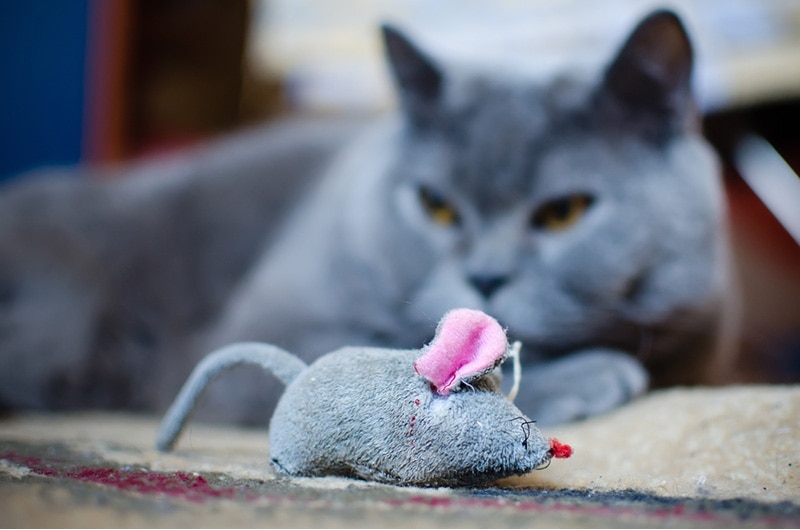
8. Tuck Away Potential Poisons
Accidental poisoning can be caused by everyday items you have sitting around your home at any given time. The only way to prevent a horrible poisoning accident is to store any potentially dangerous items in an area of a home your cat cannot access.
Many household cleaning products can cause chemical burns, vomiting, and even death if ingested by your cat.
Topical flea and tick medications contain very high concentrations of a chemical from the chrysanthemum flower that is very toxic to cats. Never apply this medication to your kitten yourself or allow them to lick it off of other pets in the household. When cats are exposed to the chemicals in these insecticides, it can cause tremors, seizures, and even death.
Medications like ibuprofen or other NSAIDs are dangerous, and even just one dose can cause poisoning. For some reason, cats are drawn to either the taste or scent of human antidepressants, such as Effexor and will selectively choose to eat the pills. Of course, this medication is very dangerous to cats and can result in serious side effects.
Many commercial rodents and ant poisons can kill cats if they eat them. Get rid of these products altogether and opt for cat-safe pest control options instead.
9. Hide Your Valuable Items
You might have been able to display your precious family heirlooms on shelves around your home in your pre-kitten household, but things are going to change once you welcome your new fur baby.
Kittens don’t know the difference between valuable breakables and cat toys, so if you want your expensive decorative accents to stay in one piece, you’ll need to hide them or put them somewhere your cat cannot reach them.
It’s important to note here that cats are notoriously good jumpers and climbers. You might think your favorite vase is safe on top of your kitchen cupboards, but your kitten would be more than happy to prove you wrong.
Fragile items should be stored behind closed doors, whether that be in a room your cat cannot access or behind cupboard doors in a cabinet.
10. Protect Your Furniture
You already know that cats are notorious for scratching and the importance of investing in scratchers for your home, but sometimes even these measures won’t stop your cat from setting his sights on your furniture.
If your kitten has taken a liking to the corners of your sofa, there are several things you can try to prevent them from scratching.
Cats hate citrus-based scents, so you can spray a mixture of lemon juice and water onto your sofa. You should test a small inconspicuous patch of the sofa material before spraying the mixture all over your sofa.
Cats also despise the scent of apple cider vinegar. Make a 1:1 mixture of apple cider vinegar and water in a spray bottle and apply it to the areas you want to deter your kitty from scratching.
Double-sided tape can also prevent unwanted scratching. While this can be unsightly, it shouldn’t be a permanent solution as your kitten will hopefully learn to use their scratching post instead of your furniture eventually.

11. Secure Your Laundry Room
Kittens are curious and will want to explore every inch of your home. Unfortunately, these explorations often lead them to places where they can get into serious harm.
Cats have passed away after cozying up to the warm clothes in their dryer and not being seen by their owners before the dryer is turned on again. You should also inspect the washing machine before running a load of laundry, as your cat may have fallen in without you noticing.
 Final Thoughts
Final Thoughts
Though it seems like a lot of work to kitten-proof your home, all of the effort will be worth it if it means welcoming a kitten into a safe space. All we want as pet owners is to provide a secure and loving home for our animals, and by taking the above steps to cat-proof your space, you are well on your way to creating a haven for your new kitten.
See also:
- How to Cat-Proof Plants: 11 Possible Ways
- Why Won’t My Kitten Poop? 6 Vet Reviewed Reasons & Solutions
Featured Image Credit: klevers, Shutterstock

